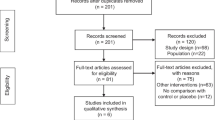Abstract
Background
Carpal tunnel syndrome causes numbness, weakness, and atrophy. Pain without numbness is not characteristic of this disease.
Questions/purposes
We tested the hypothesis that among patients with carpal tunnel syndrome confirmed by electrophysiologic testing, pain catastrophizing and/or depression would be good predictors of pain intensity at the time of diagnosis, whereas nerve conduction velocity would not.
Patients and Methods
Fifty-four patients completed a measure of tendency to misinterpret pain, a measure of depressive symptoms, anxiety about pain, self-efficacy in response to pain, and a five-point Likert measure of pain intensity. One-tailed Spearman correlation was performed to find a correlation between pain and continuous variables. One-way ANOVA was performed to assess differences between categorical variables. For each group, all variables with significant correlations with pain intensity were included in a multiple linear regression analysis.
Results
Sex, age, and electrophysiologic measures did not correlate with pain intensity. All measures of illness behavior correlated with pain intensity and were entered in a multiple linear regression model; only misinterpretation of nociception and depression were significantly associated and accounted for 39% of the variation in pain intensity.
Conclusions
Illness behavior (specifically depression and misinterpretation of nociception) predicts pain intensity in patients with carpal tunnel syndrome.
Level of Evidence
Level II, prognostic study. See Guidelines for Authors for a complete description of levels of evidence.
Similar content being viewed by others
References
American Psychiatric Association. Diagnostic and Statistical Manual of Mental Disorders. Ed 4. Arlington, VA: American Psychiatric Association; 2000.
Asghari A, Julaeiha S, Godarsi M. Disability and depression in patients with chronic pain: pain or pain-related beliefs? Arch Iran Med. 2008;11:263–269.
Bair MJ, Wu J, Damush TM, Sutherland JM, Kroenke K. Association of depression and anxiety alone and in combination with chronic musculoskeletal pain in primary care patients. Psychosom Med. 2008;70:890–897.
Carpal Tunnel Syndrome: Myths, Facts, Diagnosis, and Treatment: an interview with Aaron Daluiski, MD. Summary by Mike Elvin. Available at: http://www.hss.edu/conditions_15001.asp. Accessed May 6, 2010.
Graham B. The value added by electrodiagnostic testing in the diagnosis of carpal tunnel syndrome. J Bone Joint Surg Am. 2008;90:2587–2593.
Graham B, Regehr G, Naglie G, Wright JG. Development and validation of diagnostic criteria for carpal tunnel syndrome. J Hand Surg Am. 2006;31:919–924.
Kroenke K, Spitzer RL, Williams JB. The PHQ-9 validity of a brief depression severity measure. J Gen Intern Med. 2001;16:606–613.
Lee EJ, Wu MY, Lee GK, Cheing G, Chan F. Catastrophizing as a cognitive vulnerability factor related to depression in workers’ compensation patients with chronic musculoskeletal pain. J Clin Psychol Med Settings. 2008;15:182–192.
McCracken LM, Dhingra L. A short version of the Pain Anxiety Symptoms Scale (PASS-20): preliminary development and validity. Pain Res Manag. 2002;7:45–50.
McCracken LM, Zayfert C, Gross RT. The Pain Anxiety Symptoms Scale: development and validation of a scale to measure fear of pain. Pain. 1992;50:67–73.
Mitchell T, O’Sullivan PB, Smith A, Burnett AF, Straker L, Thornton J, Rudd CJ. Biopsychosocial factors are associated with low back pain in female nursing students: a cross-sectional study. Int J Nurs Stud. 2009;46:678–688.
Nicholas MK. The pain self-efficacy questionnaire: taking pain into account. Eur J Pain. 2007;11:153–163.
Osman A, Barrios FX, Gutierrez PM, Kopper BA, Merrifield T, Grittmann L. The Pain Catastrophizing Scale: further psychometric evaluation with adult samples. J Behav Med. 2000;23:351–365.
Potter RG, Jones JM. The evolution of chronic pain among patients with musculoskeletal problems: a pilot study in primary care. Br J Gen Pract. 1992;42:462–464.
Scangas G, Lozano-Calderon S, Ring D. Disparity between popular (Internet) and scientific illness concepts of carpal tunnel syndrome causation. J Hand Surg Am. 2008;33:1076–1080.
Spitzer RL, Kroenke K, Williams JB. Validation and utility of a self-report version of PRIME-MD: the PHQ primary care study. Primary Care Evaluation of Mental Disorders. Patient Health Questionnaire. JAMA. 1999;282:1737–1744.
Sullivan MJL, Bishop SR, Pivik J. The Pain Catastrophizing Scale: development and validation. Psychol Assess. 1995;7:524–532.
Vaccarino AL, Sills TL, Evans KR, Kalali AH. Multiple pain complaints in patients with major depressive disorder. Psychosom Med. 2009;71:159–162.
Vranceanu AM, Jupiter JB, Mudgal CS, Ring D. Predictors of pain intensity and disability after minor hand surgery. J Hand Surg Am. 2010;35:956–960.
Wright PE. Carpal tunnel, ulnar tunnel and stenosing tenosynovitis. In: Canale ST, Beaty JH, eds. Campbell’s Operative Orthopaedics. Vol 2. Philadelphia, PA: Mosby Elsevier; 2008:4285–4309.
Author information
Authors and Affiliations
Corresponding author
Additional information
One or more of the authors (DR) received an unrestricted fund from the American Orthopedics Foundation.
Each author certifies that his or her institution approved the human protocol for this investigation, that all investigations were conducted in conformity with ethical principles of research, and that informed consent for participation in the study was obtained.
About this article
Cite this article
Nunez, F., Vranceanu, AM. & Ring, D. Determinants of Pain in Patients with Carpal Tunnel Syndrome. Clin Orthop Relat Res 468, 3328–3332 (2010). https://doi.org/10.1007/s11999-010-1551-x
Received:
Accepted:
Published:
Issue Date:
DOI: https://doi.org/10.1007/s11999-010-1551-x




